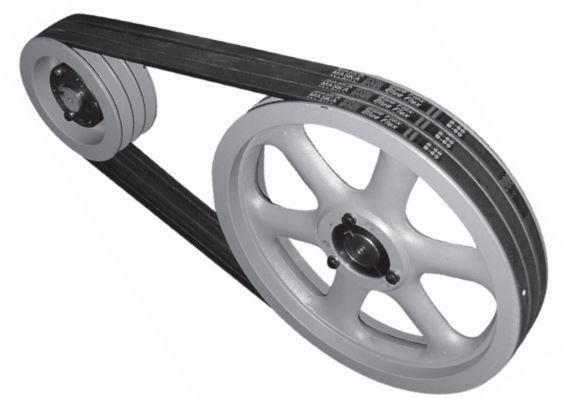
When it comes to industrial power transmission systems, selecting the right components is crucial to ensure efficiency and longevity. Among these components, pulleys for round belts play an essential role in ensuring smooth and reliable operation. Whether you’re in manufacturing, automation, or any other industry that relies on power transmission, understanding the key factors in selecting the right pulley can significantly impact performance and productivity.
In this article, we’ll explore the different types of pulleys used with round belts, how they function, and why choosing the right one is important for your operations. We’ll also highlight the value that trusted brands like Voodoo Sprockets bring to the table with their wide range of industrial solutions.
What is a Pulley for Round Belts?
A pulley for round belt is a crucial part of a power transmission system, where the round belt transmits rotational motion from one component to another. These pulleys are specifically designed to maintain tension, guide the belt, and ensure smooth movement across the system. Round belts are typically made from elastic materials, making them ideal for applications that require flexibility and a high level of tension tolerance.
Pulleys for round belts are commonly used in conveyor systems, machinery, and various industrial setups where consistent, smooth motion is required. Their round shape and versatility make them an attractive choice for many applications.
Key Benefits of Using Round Belts and Pulleys
- Flexible Operation: Round belts offer greater flexibility compared to flat belts or V-belts. This makes them ideal for applications with curved or compact spaces.
- High Load-Bearing Capacity: Round belts are known for their ability to withstand high tension, which is perfect for heavy-duty operations.
- Low Maintenance: Due to the absence of sharp angles or edges, round belts tend to have a longer lifespan and require less maintenance, reducing downtime.
- Smooth Power Transfer: Round belts provide a smooth and consistent transfer of power, leading to improved system performance and minimal energy loss.
- Reduced Noise and Vibration: The round shape of the belt helps in reducing vibrations and noise, making for a quieter and more efficient operation.
Types of Pulleys for Round Belts
When selecting a pulley for a round belt, it’s essential to consider the specific needs of your application. There are different types of pulleys that can be used with round belts, and each has its unique features.
- Flat Pulleys: Flat pulleys are the most basic type of pulley used with round belts. They offer a large surface contact area with the belt, which improves the grip and reduces slippage.
- Grooved Pulleys: Grooved pulleys have a specifically designed groove that helps keep the round belt in place. This is particularly useful for high-speed applications where the belt might otherwise slip off.
- Tension Pulleys: These pulleys are used to maintain the appropriate tension in the round belt. They ensure that the belt stays tight enough for proper function but is not overstressed.
- Idler Pulleys: Idler pulleys are used to change the direction of the round belt and are commonly found in conveyor systems and similar machinery.
- Vee Pulleys: Though traditionally designed for V-belts, Vee pulleys can also work with round belts, offering superior tracking and efficiency in certain applications.
Factors to Consider When Choosing a Pulley for Round Belts
Selecting the right pulley requires consideration of various factors to ensure optimal performance. Here are the key aspects to evaluate:
- Belt Size: Make sure the pulley is designed to fit the size and diameter of your round belt. A mismatch in sizes could lead to slippage or inefficient operation.
- Material: Pulleys are made from various materials, including steel, aluminum, and plastic. The material should be chosen based on the operating conditions, load capacity, and environmental factors like exposure to chemicals or heat.
- Load Capacity: Ensure that the pulley is capable of handling the load your system requires. Overloading a pulley could lead to premature wear and tear or failure of the power transmission system.
- Speed of Operation: Consider the speed at which the system will operate. Some pulleys are designed for high-speed applications, while others are more suited for low-speed, heavy-duty systems.
- Environment: The environment in which the pulley will operate plays a significant role in material selection. For instance, corrosive environments may require pulleys made from stainless steel or other rust-resistant materials.
Conclusion:
Selecting the right pulley for your round belt is crucial for maintaining an efficient and reliable power transmission system. With the variety of pulleys available, it’s important to understand your specific application’s needs and choose the one that best suits those requirements.
Brands like Voodoo Sprockets provide high-quality, durable pulleys that can support a wide range of industrial applications. Whether you are working with a high-speed conveyor system or need a custom solution, Voodoo Sprockets is committed to offering the best industrial components to ensure smooth, efficient operation.





Leave a Reply